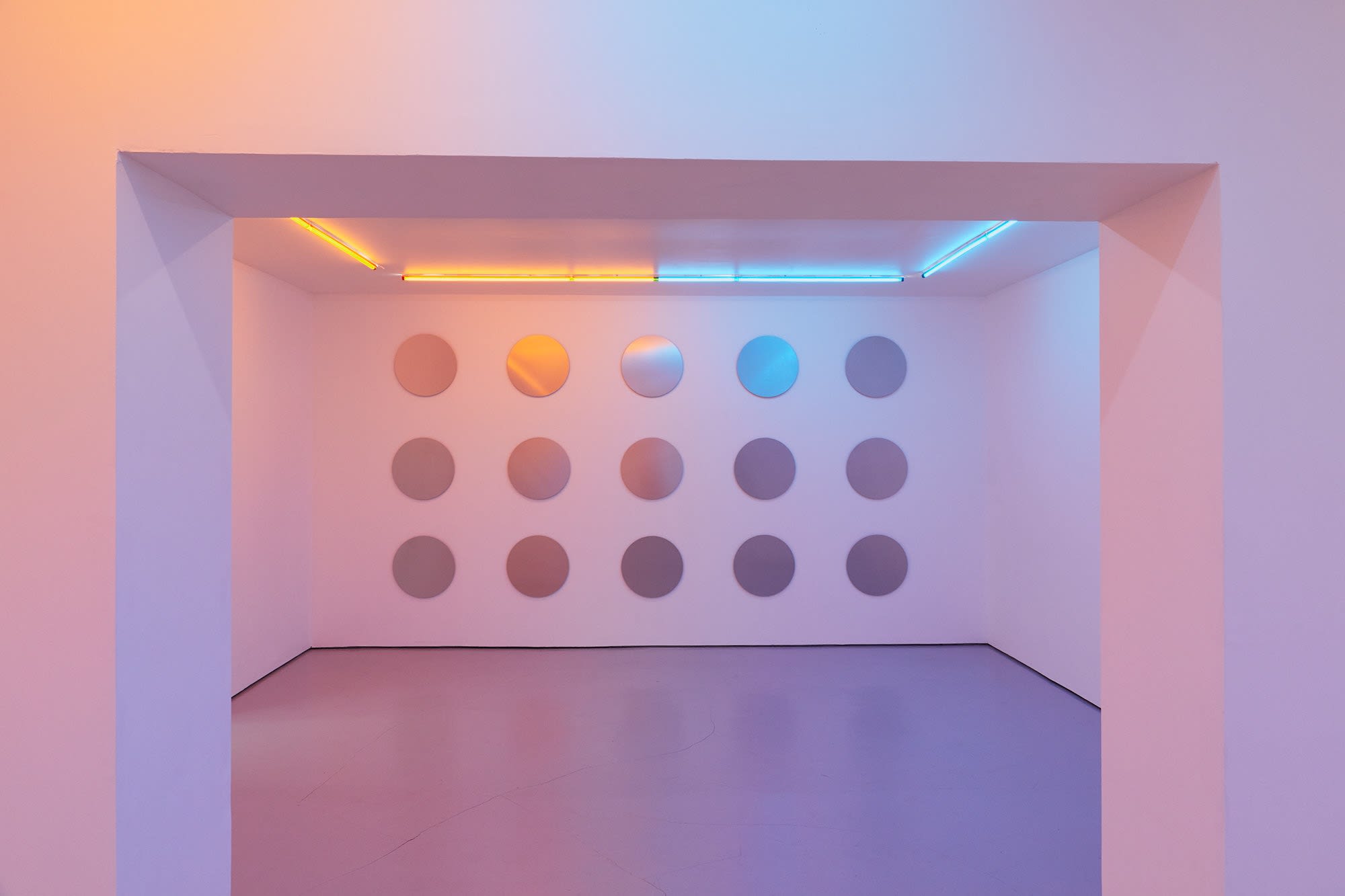
Drawn to light from an early age William Cooke would recognise that his various home environments often utilised the use of lamps as light sources as opposed to overhead illumination. The ambient and often softer light in these cases attached a sense of calm and serenity to various forms of functional lighting. As an artist now, the inevitable nostalgia associated with exploration of light and form results in these emotions being drawn out in both physical and spatial works.
Cooke has gathered and collected unusual lamps from different design periods for the past 5 years and developed an interest in the way in which designers harnessed light in varying manners. As opposed to carrying out a simple function, light in some cases is altered, becoming close to a physical object or form that seems to extend itself past simple illumination.
Using Italian architect Vico Magistretti’s Eclisse table lamp as a departure point for Luce, William Cooke expands on past work and his exploration of feeling through experience by placing photographic gels of opposing colours over LED tubing and set aluminium discs along the surfaces of two walls, intended to emulate the function of this particular lamp. Designed in 1965 with the idea of both an open and closed space in mind the reflector of the Eclisse can be altered by the user to mimic the moon’s eclipse. The idea of using nature to manipulate the sensory experience light provides was revolutionary for Magistretti.
In Luce, Cooke marries his wall-based practice with the experiential portion of the presentation by using light in the same way the artist would use pigment in a painting. An idea is conveyed through colour and form, held by the physical gallery space that acts in some ways as a framing device to both contain and shape its contents. It is at this point one can then see the gradation spread on the walls mirror that of the paintings.
Titled Looking at usual things with unusual eyes, a portion of a quote by Magistretti, the suite of painted and framed aluminium panels suggest the intangible action of expecting the invisible to become visible. As light changes in the painting’s environments so do they, with gradual shifts in light referential to slow tidal motions and the moon itself, much like Magistretti’s inspiration for the Eclisse.
